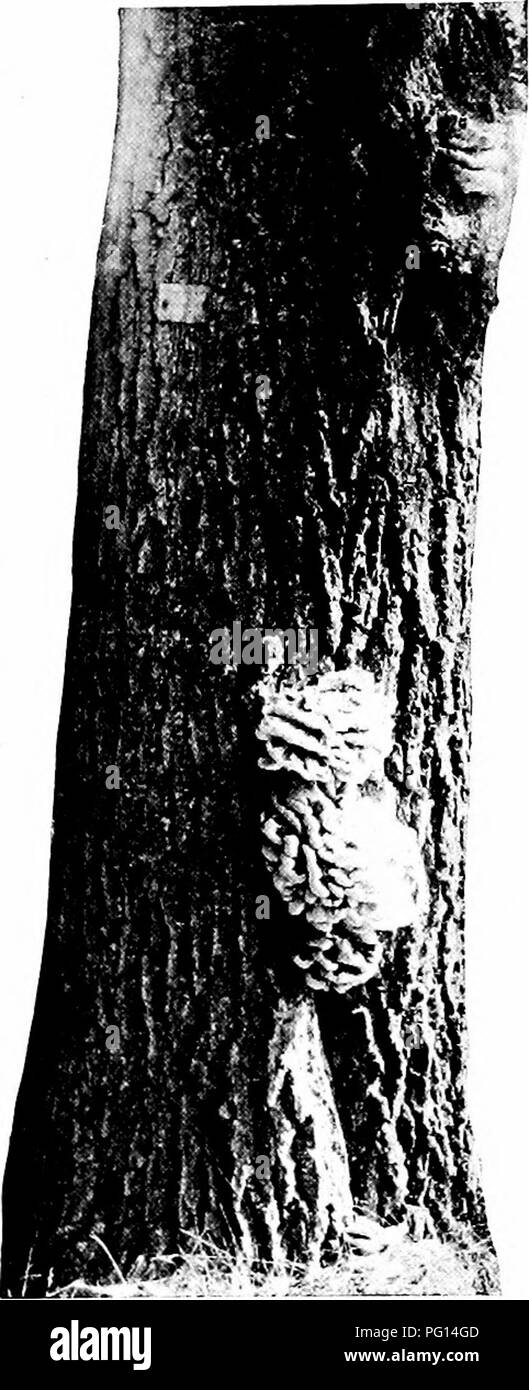. Manual of tree diseases . Trees. OAK DISEASES 249 quicldy grow larger and form a number of individual or closely over-lapping shelves, from one to several inches wide (Fig. 49). The upper surface of the sheh'es is bright orange-yellow marked with redder areas, while the under surfaces are sulfur-yellow and ap- pear honeycombed. The substance of this mature fruiting-body is tough but very watery. Insects rapidly invade it and through their work and decay caused by bacteria and possibly other fungi, the fruiting-body is quickly de- stroyed. What remains of it soon dries and becomes white and b

Image details
Contributor:
Central Historic Books / Alamy Stock PhotoImage ID:
PG14GDFile size:
7.2 MB (358.5 KB Compressed download)Releases:
Model - no | Property - noDo I need a release?Dimensions:
1009 x 2478 px | 17.1 x 42 cm | 6.7 x 16.5 inches | 150dpiMore information:
This image is a public domain image, which means either that copyright has expired in the image or the copyright holder has waived their copyright. Alamy charges you a fee for access to the high resolution copy of the image.
This image could have imperfections as it’s either historical or reportage.
. Manual of tree diseases . Trees. OAK DISEASES 249 quicldy grow larger and form a number of individual or closely over-lapping shelves, from one to several inches wide (Fig. 49). The upper surface of the sheh'es is bright orange-yellow marked with redder areas, while the under surfaces are sulfur-yellow and ap- pear honeycombed. The substance of this mature fruiting-body is tough but very watery. Insects rapidly invade it and through their work and decay caused by bacteria and possibly other fungi, the fruiting-body is quickly de- stroyed. What remains of it soon dries and becomes white and brit- tle. The mycelium in the wood lives from year to year and pro- duces these yellow sporophores annually. The young sporophores, collected before the shelves are fully matured, are among the best of the edible fungi. Cause. Brown checked wood-rot is caused by the fungus known as Polyporus sulphureus. The spores from the tubes on the under sur- face of the sporophores are wind- blown and infect the exposed heartwood at branch wounds. Certain deposits left by the mycelium of the fungus cause the reddish brown discoloration. For further details con- cerning the life history and control of the wood-rot fungi, see page 64.. Fig. 49. — Fruiting-bodies of Poly- porus sulphureus on an oak.. Please note that these images are extracted from scanned page images that may have been digitally enhanced for readability - coloration and appearance of these illustrations may not perfectly resemble the original work.. Rankin, W. Howard (William Howard), b. 1888. New York : The Macmillan Company